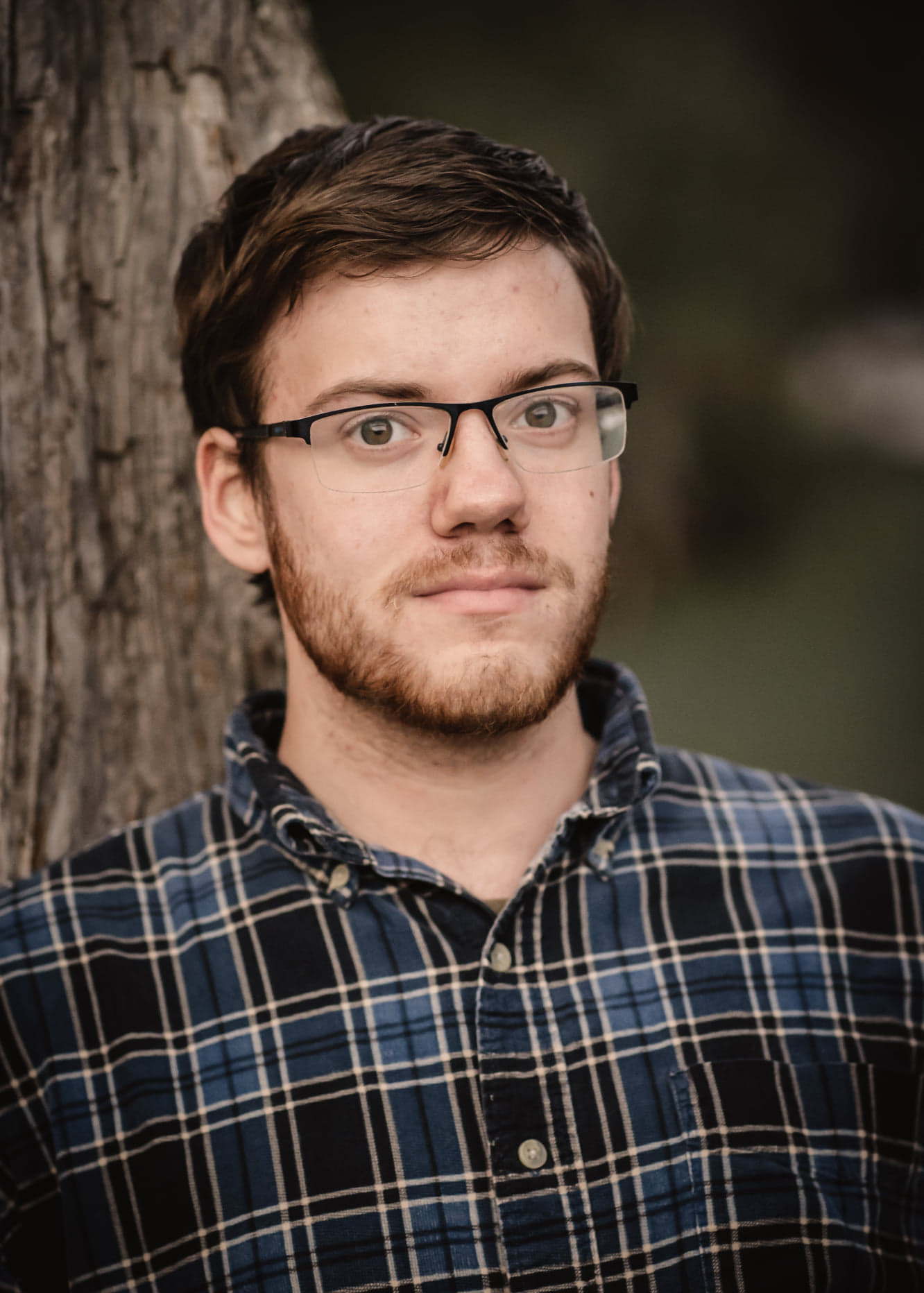When people talk about C.S. Lewis and his literary friends in the Inklings, Nevill Coghill (1899–1980) doesn’t get mentioned immediately. However, Coghill had a substantial influence on Lewis’ life and accomplished many things that are worth remembering today. He was an academic who mentored students like W.H. Auden and made The Canterbury Tales accessible to a new generation. He was a gifted theatre director who worked with Richard Burton and co-created a Broadway hit. He was a Christian whose faith impressed Lewis and others.
So, let’s take a look at his life.
How Did Nevill Coghill Meet C.S. Lewis?
Nevill Henry Kendal Aylmer Coghill was born on April 19, 1899, in Castletownshend, County Cork, Ireland. His family had an aristocratic history: his father, Sir Edgerton Bushe Coghill, was the fifth Baronet of Coghill. Art patrons know his father today for his landscape paintings.
Nevill was named for his uncle, war hero Nevill Josiah Aylmer Coghill (1852-1879). His uncle was one of the earliest British soldiers to receive the Victoria Cross posthumously. He died during the Anglo-Zulu War, rescuing soldiers from Zulu forces after the Battle of Isandhlwana. His death was depicted in the 1979 movie Zulu Dawn.
Both Nevill and his older brother, Ambrose, were entertainers. Ambrose acted in films and TV, most notably the 1968 TV movie “Whistle and I’ll Come to You!” and the 1969 musical Oh, What a Lovely War! As shall be seen, Nevill had a long career making entertainment behind the scenes as a playwright and stage director.
Coghill enlisted in the Royal Field Artillery in 1917 and served in Salonika and Bulgaria during World War I. After his service ended in 1919, he began studying at Exeter College, Oxford. His classmates included C.S. Lewis. Lewis wrote in his memoir Surprised by Joy that they met in 1922, when Lewis was still an atheist, and Coghill made quite an impression:
“I soon had the shock of discovering that he—clearly the most intelligent and best informed man in the class—was a Christian and a thorough-going supernaturalist. There were other traits that I liked but found (for I was still very much a modern) oddly archaic; chivalry, honor, courtesy, ‘freedom’, and ‘gentillesse’. One could imagine him fighting a duel.”
While Lewis wouldn’t embrace Christianity for another decade (aided by conversations with friends like J.R.R. Tolkien and Owen Barfield), meeting Coghill challenged him to rethink his views on faith.
Coghill stayed friends with Lewis for the rest of their lives, taking part in inside jokes (like Lewis sending Coghill a letter in Old English). They influenced each other in big and small ways. In 1936, Coghill loaned Lewis a copy of The Place of the Lion, a supernatural thriller by Charles Williams. Lewis wrote Williams a fan letter praising the book, and the two men became good friends. When World War II led Williams to move to Oxford, he became part of the Inklings, which met weekly in Lewis’ Magdalen College rooms to share their work. Coghill attended many times, and other members included Tolkien, Hugo Dyson, and Dr. Robert “Humphrey” Havard.
Lewis sometimes trusted Coghill with surprising stories about his spiritual life. For example, in 1957, Lewis’ wife, Joy Davidman, was diagnosed with cancer that damaged her legs. She had a seemingly miraculous recovery seven months, the same time that Lewis was diagnosed with osteoporosis. Lewis confided to Coghill that he believed God had allowed him have Joy’s pain.
“Do you mean,” Coghill said, “that her pain left her and that you felt it for her, in your body?”
“Yes,” Lewis replied, “in my legs. It was crippling. But it relieved hers.”
As Lewis explained in a letter to his friend Sheldon Vanauken, he believed this was “a Charles WIlliams substitution.” Williams speculated that Christians could bear each other’s burdens literally, including illnesses and mental struggles—in Lewis’ case, illness leaving his wife’s bones and affecting his bones.
Coghill wrote occasionally about his time with the Inklings. After Lewis’ death, Coghill contributed an essay about their friendship to Joycellin Gibbs’ book Light on C.S. Lewis. He also wrote for them or with them. When Tolkien retired from teaching, Coghill contributed an essay to English and Medieval Studies Presented to J.R.R. Tolkien on the Occasion of his Seventieth Birthday. He also worked with Christopher Tolkien, one of the last people to join the Inklings. Together, they edited three books of Chaucer’s stories (The Pardoner’s Tale, The Nun’s Priest’s Tale, and The Man of Law’s Tale) in the late 1950s.
Even looking outside his friendship with Lewis and time with the Inklings, Coghill was a notable figure.
What Did Nevill Coghill Accomplish as a Teacher?
Coghill finished his degree in 1923. Bruce Edwards reports that Lewis and Coghill were “the only students that year to receive first class degrees in English Language and Literature.”
In 1924, Coghill became a fellow of Exeter College and held various positions at the school until he became the Merton Professor of English in 1957. He retired from teaching in 1966.
Coghill wrote extensively on Shakespeare and Chaucer, and most records suggest that he was insightful. He did ruffle some feathers: Oxford don Maurice Bowra dismissed him as a “good college man” but no scholar. However, Coghill’s research still commands respect. Contemporary writers (including Shakespeare scholars Scott McMillan, Simon Shepherd, and Mark Wallis, and essayist Austin Clarke) continue to cite his work.
Coghill’s best-known Chaucer work was a translation of The Canterbury Tales in 1949 for a BBC radio production. Penguin Books published his version in 1951, and it became a bestseller, one of the most famous modern editions of the book.
While Coghill became best known as a Chaucer scholar, he made significant contributions in another interesting area: T.S. Eliot’s plays. Coghill contributed to T.S. Eliot: A Symposium and provided notes or other editorial material to The Family Reunion, The Cocktail Party, and Murder in the Cathedral. His article for T.S. Eliot: A Symposium reports a surprising lunch conversation with Eliot in the 1930s: Coghill had seen a 1934 production of Eliot’s play Sweeney Agonistes and wondered if the play promoted violence toward women. Eliot denied that was his intention, and they discussed whether a play can have two contradictory ideas—what the playwright intends vs. how the director interprets it.
Coghill also tutored various students, most famously W.H. Auden. David Horan reports that when they first met in 1926, Auden announced he planned to be a poet, and Coghill wasn’t impressed. Auden responded, “You don’t understand at all. I mean to be a great poet.” Auden eventually became one of his generation’s most celebrated poets. While their first meeting was frosty, Auden later dedicated The Dyer’s Hand and Other Essays to Coghill, calling him “a tutor in whom one could confide.” After Coghill retired from teaching, Auden contributed to the festschrift To Nevill Coghill From Friends.
Other notable students included editor and writer Paul Engle, poet Reynolds Price, and translator Yang Xianyi. All of them remembered Coghill as a supportive and helpful teacher—Engle recalled Coghill entertaining Engle’s mother on a visit to Oxford.
If Coghill was successful at teaching literature, records suggest he was exceptional at directing theatre.
What Did Nevill Coghill Contribute to Theatre?
Coghill made a substantial contribution to Oxford’s theatre scene early on: in 1936, he founded the Experimental Theatre Club (still active today). He surpassed this success as a director.
Pamela M. King reports he made an impression during the 1930s when he directed the Chester mystery play Noah’s Flood at Pinkhill Lock near the Thames River. When the time came for the flood, Coghill had the lockgates open to make real floodwaters appear onstage.
Coghill directed John Gielgud in A Mid-Summer Night’s Dream at the Theatre Royal Haymarket in 1945, but King reports it wasn’t very successful. Coghill turned out to be “an unconventional director” who didn’t emphasize typical details (blocking scenes, making sure actors spoke verse lines exactly right). His greatest skill was interpreting classic plays and staging them in unusual locations—skills better suited to student theatre.
From 1940 onward, Coghill worked extensively with the Oxford University Dramatic Society. In 1948, he co-wrote The Masques of Hope, a play celebrating then-Princess Elizabeth visiting University College. The next year, Coghill directed a groundbreaking OUDS production of The Tempest. In 1964, he worked with Martin Starkie to write the book for a musical version of The Canterbury Tales.
He taught or advised a variety of young scholars interested in plays, including Peter France and Braham Murray. Probably his best-known student was a 16-year-old actor named Richard Burton, studying at Exeter College under a 6-month scholarship. Burton played his stage role for Coghill, as Angelo in a 1944 production of Measure for Measure. Coghill reportedly later said, “I have had many students of very great gifts and many of very little. But I have had only two men of genius to teach—W.H. Auden and Richard Burton. When they happen, one cannot mistake them.”
Coghill made quite an impression on Burton as well. Clyde Kilby recalled that when he met Coghill in 1965, Coghill was still corresponding with Burton and they had reconnected the previous year. In a 1965 letter, Burton reportedly said the three weeks he spent at Oxford in 1964 were some of the best weeks of his life.
The Burton connection eventually made Coghill the only Inkling to direct a film. In 1966, Coghill directed Burton and his wife, Elizabeth Taylor, in an OUDS production of Christopher Marlowe’s play Doctor Faustus. The next year, Coghill spent several weeks in Rome co-directing a movie version with Burton.
On paper, both projects should have been great successes. As Sara Munson Deats observes, Coghill had directed Doctor Faustus for the OUDS in 1957, and Burton and Taylor were their generation’s most famous actors. The play sold out, but reviews were mixed. Reviews for the movie were poor. In hindsight, the problem may have been that the play and movie spent more time highlighting Burton and Taylor than making all the elements (actors, script, presentation) work together as a package.
However, Burton and Coghill get to meet again in happier circumstances. In 1968, The Canterbury Tales musical was restaged in the West End, and Burton and Taylor attended the premiere at Phoenix Theatre. The musical was very successful—so much so that in 1969, it transferred to Broadway and was adapted into a BBC miniseries. Its success continued—the year Coghill died, 1980, it had a Broadway revival.
5 Important Things We Can Learn from Nevill Coghill
1. Healthy friendships can withstand differences of opinion. While Coghill was great friends with Lewis, he didn’t agree with him on everything. For one thing, he enjoyed T.S. Eliot’s work, and Lewis vocally hated Eliot (at least as a poet).
2. Kindness matters. It’s tempting for greatly skilled people to overpower everyone with their knowledge. Peter France recalls that what stood out about his time with Coghill was how often Coghill showed more interest in France’s view of Shakespeare than in airing all his own opinions: “Later, much later, I came to understand that this is true humility. And that Nevill Coghill was a Christian.”
3. Recognizing limitations is no bad thing. Many theatre directors would have been excited to work with someone like John Gielgud, and then been crushed if the experience wasn’t successful. Coghill experienced disappointment but chose to keep on directing student productions, recognizing that his strengths lay in a different area.
4. Success comes in different ways. While writers often seek to be known for creating an original character or story, sometimes the greatest success comes with making something old accessible. Coghill may not have written an “original” story like The Lord of the Rings or the Chronicles of Narnia, but he brought The Canterbury Tales to a new generation of readers.
5. People are complex. While Coghill was admired by many, there are parts of his life that some Christians find concerning. For example, his student Reynolds Price reports in Arden Spirits that Coghill married in 1927 and had a daughter, but the marriage ended in 1933, and Coghill “lived a quietly homosexual life thereafter. He later spoke to me of several romances with men, but he apparently never established a residence with any of them.” It’s hard to verify these claims today since Coghill died in 1980 and Price died in 2011. Given that homosexuality was illegal in the United Kingdom for most of Coghill’s life, any information about these relationships would require deep research into Coghill’s archives.
All these factors mean there are many things we currently don’t know about Coghill’s sexuality. We don’t know if Coghill had homosexual relationships. If he did, we don’t know how he saw it within his faith’s context—whether he accepted it or struggled with it, saw it as part of himself or a burden to bear. What we do know is that whatever his sexuality, it didn’t change his fundamental identity: a complicated man who loved God and was loved by God. The same holds true for everyone who follows Jesus.
Nevill Coghill is one of the most understudied Inklings, and well worth examining today. Whether readers explore his scholarship, his faith, or how he influenced his friends and students, his life was rich and significant.
10 Great Books by Nevill Coghill
Much of Coghill’s work is hard to locate today, but multiple books he wrote are still available.
1. The Canterbury Tales
2. The Poet Chaucer
3. The Masque of Hope
4. Visions from Piers Plowman
5. The Poet Chaucer
6. Shakespeare’s Professional SkillsM
7. Langland: Piers Plowman
8. Troilus and Criseyde: Translated into Modern English
9. Chaucer’s Idea of What Is Noble
10. The Collected Papers of Nevill Coghill: Shakespearian & Medievalist
Scholars interested in his life and work can find out more from fellow Inkling John Wain’s essay “Nevill Coghill and C. S. Lewis: Two Irishmen at Oxford,” in the book C.S. Lewis and His Circle.
More information about him is also available through The Chaucer Heritage Trust and his papers at the Bodleian Library.
Photo Credit: ©GettyImages/standret

This article is part of our People of Christianity catalog that features the stories, meaning, and significance of well-known people from the Bible and history. Here are some of the most popular articles for knowing important figures in Christianity:
How Did the Apostle Paul Die?
Who are the Nicolaitans in Revelation?
Who Was Deborah in the Bible?
Who Was Moses in the Bible?
King Solomon's Story in the Bible
Who Was Lot's Wife in the Bible?
Who Was Jezebel in the Bible?
Who Was the Prodigal Son?









